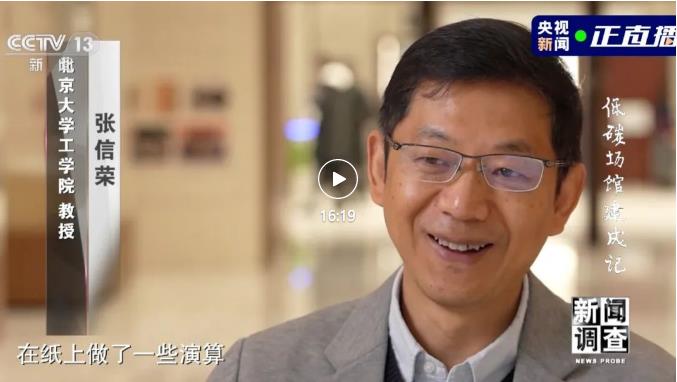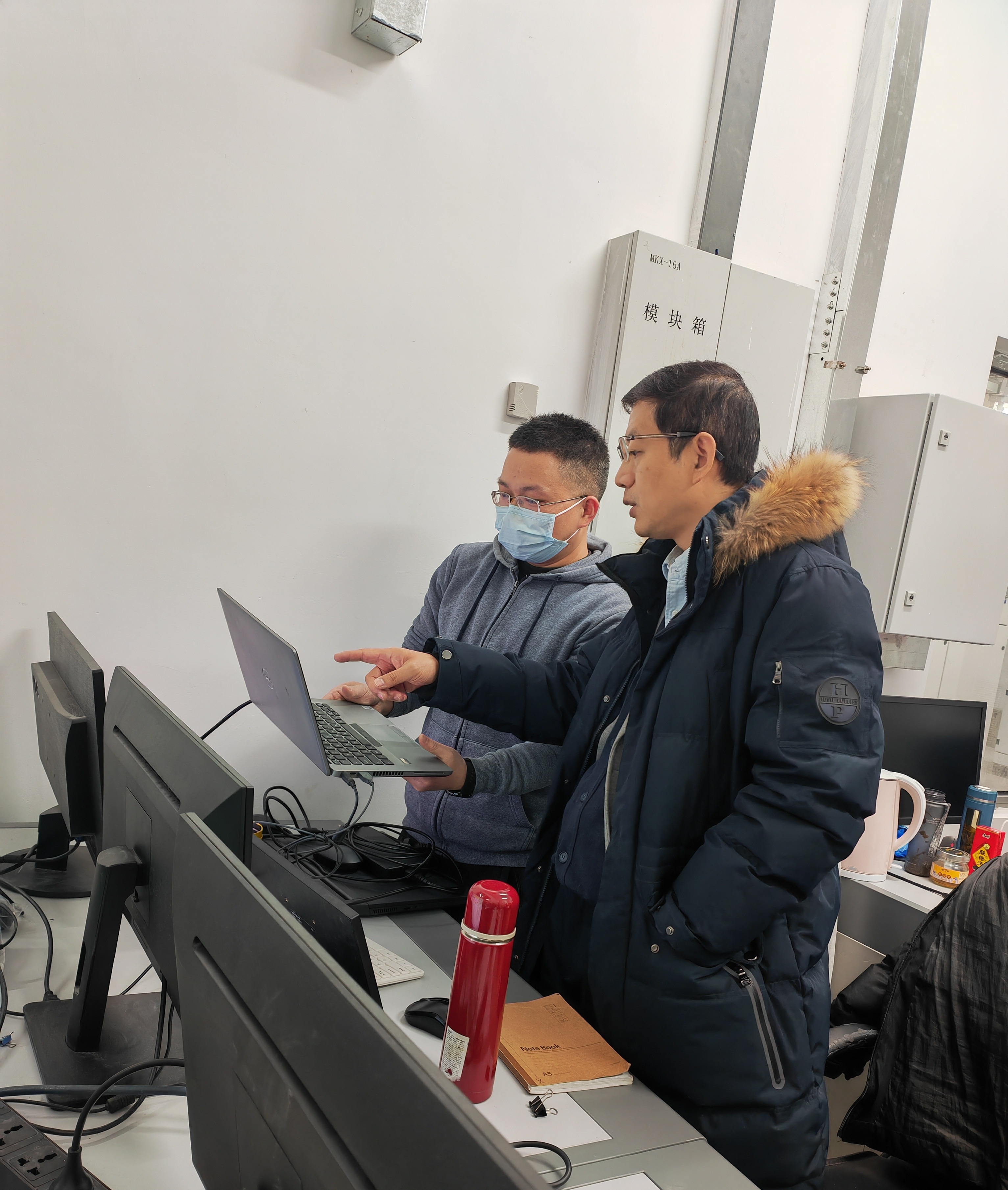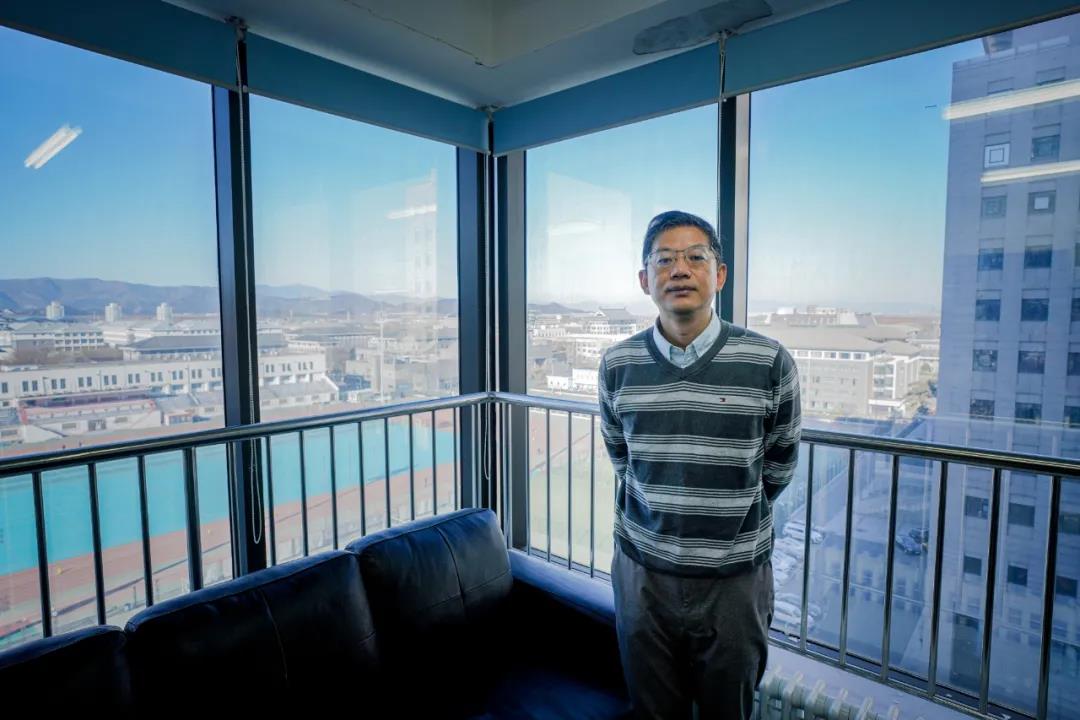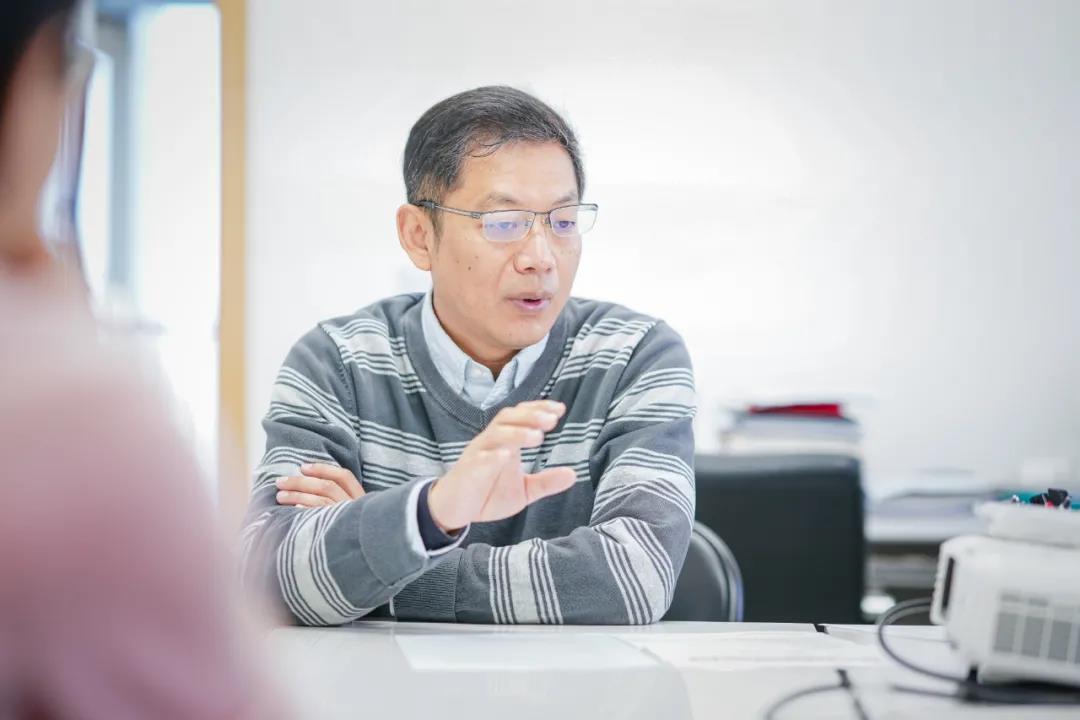[Beijing 2022 Olympics] Zhang Xinrong: The Road to Green Ice-making
Feb 06, 2022
Peking University, February 6, 2022:
During the afternoon of February 5, 2022, Dutch speedskater Irene
Schouten won gold in the women’s 3000 meters with an Olympic record of 3
min 56.93sec at the National Speed Skating Oval, breaking a
long-standing Olympic record in 20 years. With her unparalleled
achievements, comes the ice-making technology which granted her the
stage where she was allowed to showcase her record-breaking performance.
Professor Zhang Xinrong and his team at PKU is dedicated to the
fundamental research and application of CO2 transcritical refrigeration
system, the technology that is being used at the Beijing Winter Olympic
Games today.
Zhang
Xinrong is a professor at the College of Engineering, Peking University
and also director of Beijing Engineering Research Center of City Heat.
For decades, Zhang and his team have investigated the theories behind
functional thermo-fluids preparations, flow dynamic, heat and mass
transfer, and thermodynamic cycle from both the micro/nano scale and
macroscopic scale. In preparation for the 2022 Beijing Winter Olympics,
Zhang’s group took on the crucial task of snow- and ice-making based on
their achievements in developing CO2 thermodynamic systems.
 Prof. Zhang Xinrong in CCTV report
Prof. Zhang Xinrong in CCTV report
Snow- and ice-making in 2022 Beijing Olympics
Stepping
into the old Shougang Industrial Park, you will see the famous Big Air
Shougang – the only snow event venue in downtown Beijing – with its
ribbon-like track fully covered by thick, spongy snow. Here, athletes of
freestyle skiing and snowboarding will pursue their best performance in
the upcoming 2022 Beijing Winter Olympics.
But
for those who lived in Beijing for a long time, such a view would seem
unreal and counter-intuitive. Considering the fact that the two Olympic
events (Olympics and Paralympics, respectively) will be held
respectively in February and March, the temperature during this time
will fluctuate within the range of 2~3 oC, which makes it difficult to
form ice or snow naturally, let alone hosting games of outdoor snow
sports. The dry weather of Beijing aggravates the problem, since the
city usually does not have precipitation during winter. In fact, the
scarcity of snow has been a common issue for many host cities of winter
games, making man-made snow an indispensable requirement for these
areas.
The history of
snow-making can be traced back to the 1980 Winter Olympics in Lake
Placid. In recent times, the proportion of man-made snow was once raised
to 90% in the 2018 Olympics in Pyeongchang. Typically, a snow-making
machine would compact a mixture of water and air to form huge amounts of
ice nuclei. When the mixture gets shot into the air, the nuclei of the
mixture would quickly precipitate into the free water molecules, forming
snow with structures similar to the natural ones. However, this
equipment would not work when the atmosphere temperature surpasses 2 oC,
which means that for the success of the Winter Olympics, Beijing must
come up with a new method.
Over
the past 5 years, Professor Zhang Xinrong and his colleagues at the PKU
College of Engineering has taken over the key project of snow-making
and -storage at the ambient temperature above 0 oC. They invented a new
form of indoor snow-making guns that could tune the humidity and
granularity of snow by altering the direction and jet speed of water.
“Under the temperature of 0~15 oC, the traditional method would use
crushed ice as a substitute of snow. However, such ‘snow’ greatly
differs from its natural counterpart due to the fact that ice is much
harder in density than snow, which may pose potential risks to
athletes.” As Professor Zheng Qiuyun, member of Zhang’s research team,
indicated. “But snow produced by our machine boasts superior properties
similar to natural precipitates even at the ambient temperature of 25
oC, with a production speed of 6 m3 per hour.” Furthermore, the whole
heat recovery can be made from the snow-making process, which can be
used to create an outdoor low temperature ambient enough for thermal
comfort.
Their
innovations were also widely applied in the production of ice. The ice
used at the National Speed Skating Oval which covers an area of 12,000
m3, making it the largest in the world – was also created and sustained
by the natural fluid CO2 transcritical refrigeration system developed by
Zhang’s group. According to Zhang’s innovation, the difference in
temperature across a vast ice surface can be lower than 0.5 oC, thereby
allowing the ice to have even hardness across the entire surface. This
will act as a favorable element for athletes to break their records in
the 2022 Olympics, as their speeds depend on not only their hard
training, but also the evenness of the ice. “We aimed to make our ice
even so that it can yield world records. During the Olympic
international test trials, many athletes achieved their best records on
our ice.” The transcritical CO2 refrigeration technologies innovated by
Zhang’s groups are currently applied in 5 out of the 9 ice venues used
for the 2022 Olympics and represent the highest level of sport-related
technologies in the world. The whole waste heat is recovered for
supplying heat for dehumidification, hot water, antifreeze and preheat
in venues. He is the first whistler to put forward systems using CO2 for
the ice rinks in 2022 Beijing Olympic Games.
 Professor Zhang Xinrong and his team at the National Speed Skating Oval
Professor Zhang Xinrong and his team at the National Speed Skating Oval
CO2 thermal cycle underpins a green Olympics
The
progress made by Zhang’s research team exceeds beyond the manufacture
of ice and snow. The refrigeration fluid they have created out of carbon
dioxide was also a significant accomplishment.
It
would at first seem nonsensical that Zhang’s group would set their
ice-production system dependent on the most widely-known greenhouse gas,
CO2, especially when countries across the globe are working hard to
reduce its emission and save our planet from global warming. China has
prioritized a reduction of CO2 emission before 2030 and reaching carbon
neutrality before 2060. Within the framework of these agendas, Beijing
aims to host the 2022 Winter Olympics in a green and sustainable way.
Therefore, many people may be perplexed when Zhang’s design was
described to rely on CO2. In reality, however, Zhang’s refrigeration
equipment features environment friendly and energy-efficient methods.
The
most common refrigerants are Freon and ammonia, which are also listed
as greenhouse gases. Freon, once diffused into the atmosphere, will
destroy the ozone layer through unstoppable chain reactions, and ammonia
is toxic by itself. Compared to its two counterparts, the carbon
dioxide has unique advantages. “In fact, carbon dioxide is an
environment-friendly refrigerant, since we can abstract it from the air
without generating new emissions during the refrigeration cycle,” noted
by Wang Wei, deputy chief engineer of Beijing Institute of Architectural
Design. In thousands of steel tubes beneath the ice of the National
Speed Skating Oval, liquid carbon dioxide gets evaporated to absorb heat
from water and transformed into ice. The CO2 gas is then transported to
air compressors which compacts it into a supercritical state containing
huge amount of energy. While unstable CO2 gets condensed to release
energy, a process of swelling into liquid form presumes and eventually
CO2 returns back to tubes under the ice.
 Professor Zhang Xinrong guiding the Winter Olympic Ice-making Operation Team
Professor Zhang Xinrong guiding the Winter Olympic Ice-making Operation Team
“The
CO2 direct cooling system developed by our team could achieve snow and
ice-making efficiently in limited space with low temperature,” Professor
Zhang added. “This was a bold trial unprecedented in history.” Zhang’s
team integrated the equipment of both cooling and heating into one
system, where ice would be formed in the hypobaric chamber and energy
would be recycled in the hyperbaric chamber, ultimately allowing “the
energy released in the thermodynamic cycles to be utilized for the
heating of venues and the provision of hot water supply for athletes.”
This thermodynamic system would save 2 million kW·h of electricity and
more than 30% of total energy, reducing the carbon dioxide emission of
more than 900 tons every year.
The snowmaking guns developed by Zhang’s group also exhibited good performance in the pilot experiments carried out in the Shijinglong Sky Resort at Yanqing, Beijing. These new guns reduces the energy cost by half compared to those that used Freon as a refrigerant, and it utilizes only 1/3 of liquid nitrogen typically required in a traditional snow-making machine.
Listed in the basic principles of 2022 Beijing Winter Olympics and Paralympics, environmental protection policy was listed as the top priority to show China’s determination to reach its emission reduction goals. Zhang’s snow and ice-making system, together with other energy-efficient practices, will provide crucial reference for further carbon-reduction trials in China’s applied research toward carbon neutrality.
CO2 as a refrigerant has broader stage for green development
The
application of CO2 refrigeration system encompasses more than cooling
procedures in Professor Zhang’s blueprint. Compared to traditional
methods, the eco-friendly CO2 system boasts high safety and low running
cost that others cannot be on par with. Considering the sustainability
element that the CO2 system embodies, the CO2 thermodynamic system poses
as a promising choice in future sports events. Zhang has been devoted
to the wider application of CO2 circulation and the development of
supporting technologies over the past several decades. The strong
compressibility of CO2 in its transcritical region grants its potential
application in enhancing the efficiency of heat transfer and electricity
generation. Based on this characteristic of CO2, Zhang and his
collaborators invented a supercritical CO2 solar collector that enhanced
the utilization of solar power. He is the first to propose CO2 as the
working fluid for power generation cycles, which are very promising in
applications for various future power plants.

The
CO2 cooling-heating system is also used in coal mines. The intolerable
environment in large-depth mines has long been a long-term problem, as
the deep galleries are characterized by high temperature and humidity.
Recent policy on eco-protection aggravates the problem as it banned the
use of boilers that would result in serious pollution. However, Zhang
saw the “heat hazard” as an opportunity to make full use of the huge
amounts of energy otherwise released wastefully. They designed a CO2
unit to extract the thermal energy in the mine galleries and transferred
it to supply heating above ground. Zhang hopes that in the future, the
CO2 unit can be manufactured to replace the expensive old equipment.
Professor Zhang is also director of the Beijing Engineering Research Center of City Heat (BERCCH), which was co-founded by Peking University, Beijing Municipal Science & Technology Commission and Beijing Energy Conservation and Environmental Protection Center in 2014. This center aims to act as a bridge between industrial needs and applied research, as well as prompting the development of urban heat management through technological support. The BERCCH provides a broader platform for scientists whose interests lie in the conversion of thermal energy. Here, Zhang and his counterparts from other top academic institutes in China work together in projects aiming to upgrade technologies used in heat pump, heat storage, solar energy and thermal management integration. Their achievements include fluorine-free CO2 heat pump of the 100 kW level, hot sludge fuelization and heat extracting technology of sewage. In urban areas, however, there are still huge amounts of heat energy being wasted, as Professor Zhang mentioned in his interview, “There are many computing centers in Beijing, which cool down the room temperature with air conditioners that constantly transfer heat from indoors to outdoors without recycling available energy. However, we could store the energy and apply them to heating supplies for surrounding communities in winter through CO2 thermodynamic cycles.” BERCCH still has a long way to go and huge tasks to shoulder in Beijing’s plan to forge as an eco-friendly city.

In the history of refrigerants, CO2 is already a well-known substance with its roots traced back to 1850, when an American called Alexander Twining introduced it into the refrigeration of the steam compression system. The system was a revelation at the time, but nowadays, its cooling efficiency is severely limited due to its low critical temperature and high critical pressure, which explains its decline and the reality of being replaced by systems that utilize Freon and Ammonium. In the new era of sustainable scientific research, CO2 can now act as a natural refrigerant which might win the final victory in the battlefield of refrigeration against other fluoric counterparts. When that happens, humanity would be able to embrace a greener and more self-sufficient world with lower or even zero carbon emission. In other words, we are all working together for a shared green future – which is exactly what Professor Zhang and his team believes in.
Written by: Bai Qingwen
Edited by: Rose Li & Zhang Jiang





